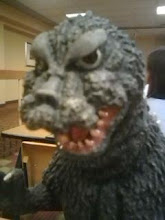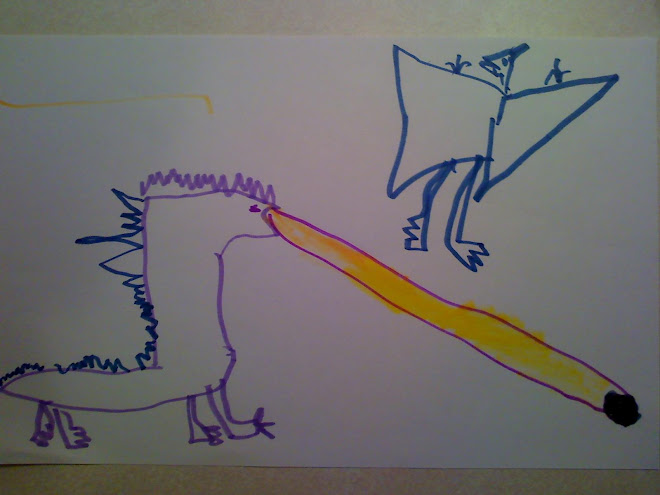
Fifty-five years have passed since Godzilla first lumbered ashore to obliterate Tokyo. In honor of that milestone (and the film's current Blu-ray release) here are five things I love about the original Japanese version of Godzilla.
5. The Context. Godzilla immediately transcended the already popular "monster-on-the-loose" genre because of its source--Japan. The story, which was at least partially inspired by The Beast From 20,000 Fathoms, is given unusual gravity because it is played out in the shadow of Hiroshima and Nagasaki, and, to a somewhat lesser degree, the Lucky Dragon fishing boat incident, in which fisherman were exposed to high levels of radiation due to nuclear testing. Godzilla is what it is because of the setting--coming from any other culture on earth, it wouldn't have meant the same thing.
4. Consequences. Godzilla is unique in that it dwells upon the victims of the monster's attack, and does not shy away from depicting the suffering of those who survived. When Emiko cradles the wailing little girl in her arms in the disaster shelter, her heart breaks, and the viewer's does too. This sensitive approach to portraying human pain in the wake of destruction would never be precisely duplicated in another Godzilla film, and many wouldn't even try.
3. The Special Effects. This risks a "Duh!" from the reader, but they can hardly be omitted. The effects work in Godzilla creates a haunting netherworld that is both realistic and dreamlike. The fact that Godzilla is presented in black and white may enhance the perception that one is viewing something "historical," yet clearly outside of any normal experience. Godzilla's ponderous weight, sometimes conveyed through slow motion film speed, adds to the sense of impending doom, as he laboriously lays waste to the city. Some of the most memorable scenes for me are Godzilla's march through the trainyard and his peaceful respite at the bottom of the bay moments before the Oxygen Destroyer is released. I've also always loved the matte painting of Godzilla's footprints (and tail trail) on the beach of Odo Island.
2. The Music. Akira Ifukube's score is almost another character in Godzilla. It evokes emotion, often functions as a sound effect in itself, and even drives the action. After all, it is Dr. Serizawa's interaction with the hymnlike "Oh Peace, Oh Light Return" that finally convinces him to take action as only he can. Ifukube's contribution to the Godzilla mythos in incalculable. Maybe one could say (or already has) that if Eiji Tsuburaya gave Godzilla a body, Ifukube gave him a soul.
1. Akhiko Hirata's Performance as Dr. Serizawa. Hirata courageously rides the edge in his portrayal of the tortured Serizawa, yet never veers off into "mad scientist" caricature. The scene where he dispassionately burns his research notes is surprisingly moving, and beautifully anticipates the sacrifice he makes in keeping the Oxygen Destroyer a secret. Such acting is the norm in Godzilla and is perhaps an overlooked element in its enduring power.
As with any list, there were omissions (it was very hard not to type the name Takashi Shimura--ah, there, I did it) that probably deserve inclusion. As the saying goes, when you say "yes" to one thing, you're saying "no" to another. With that in mind, consider this a brief and incomplete salute to the greatest monster movie ever made: Godzilla!


































































No comments:
Post a Comment